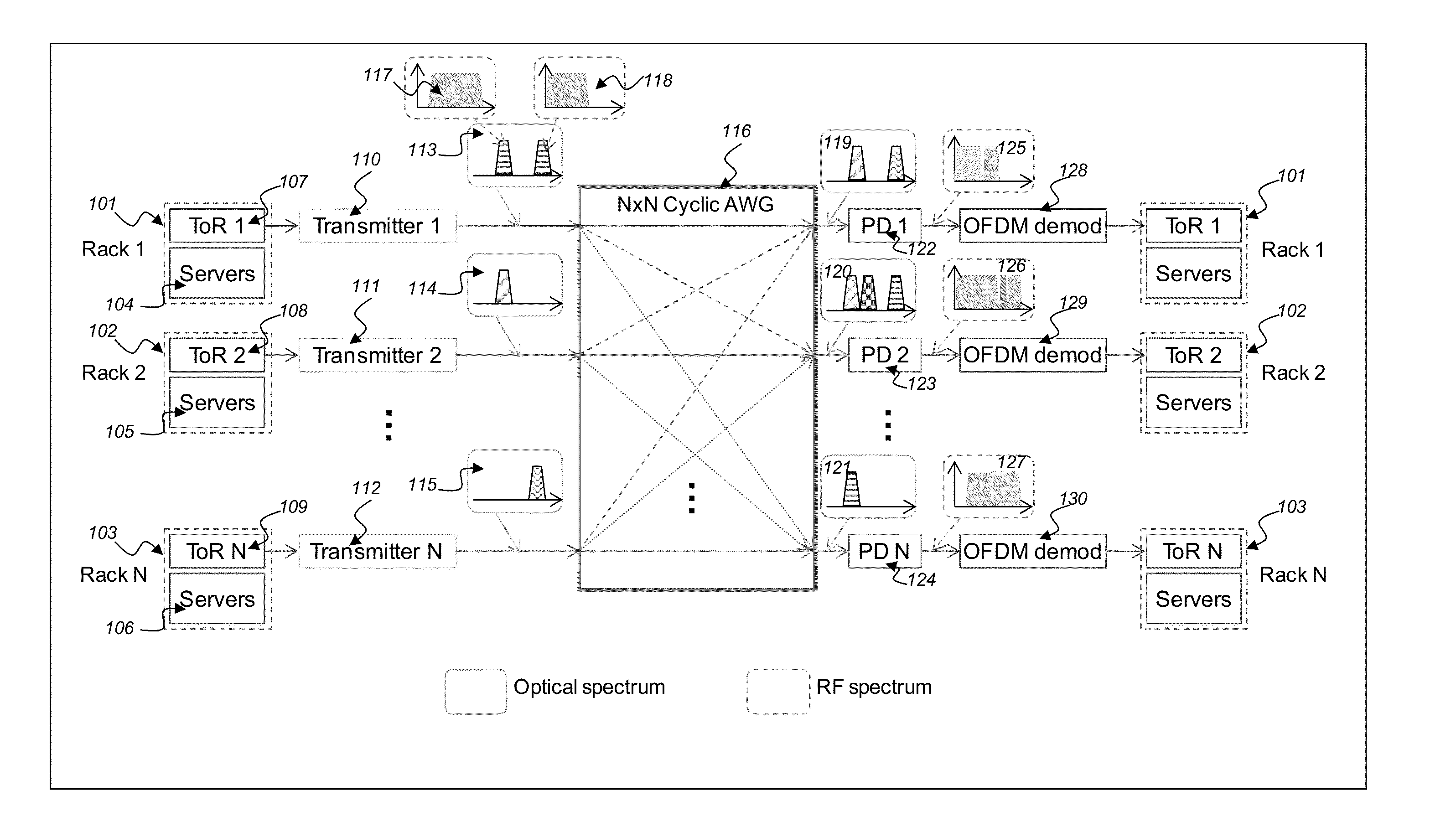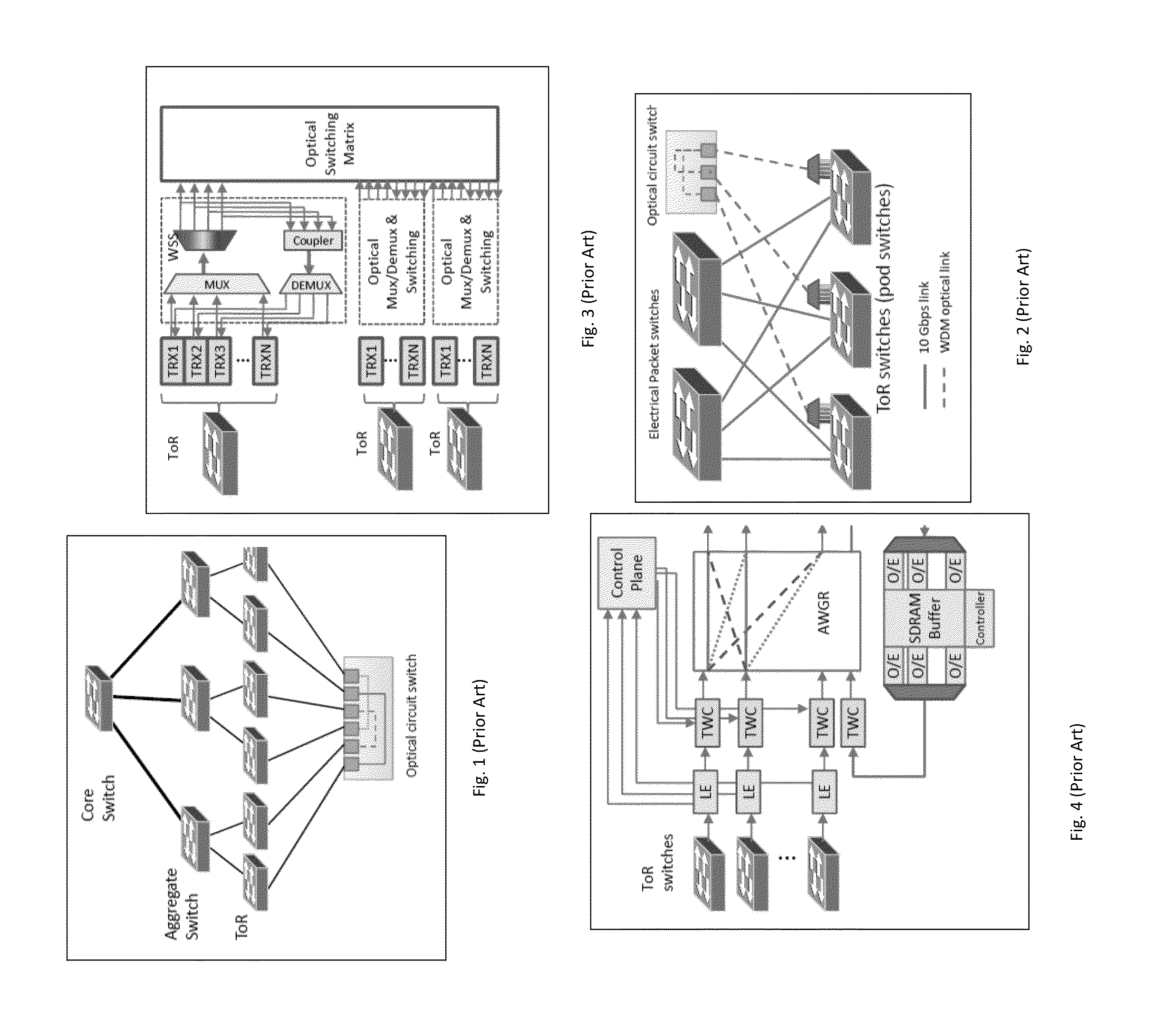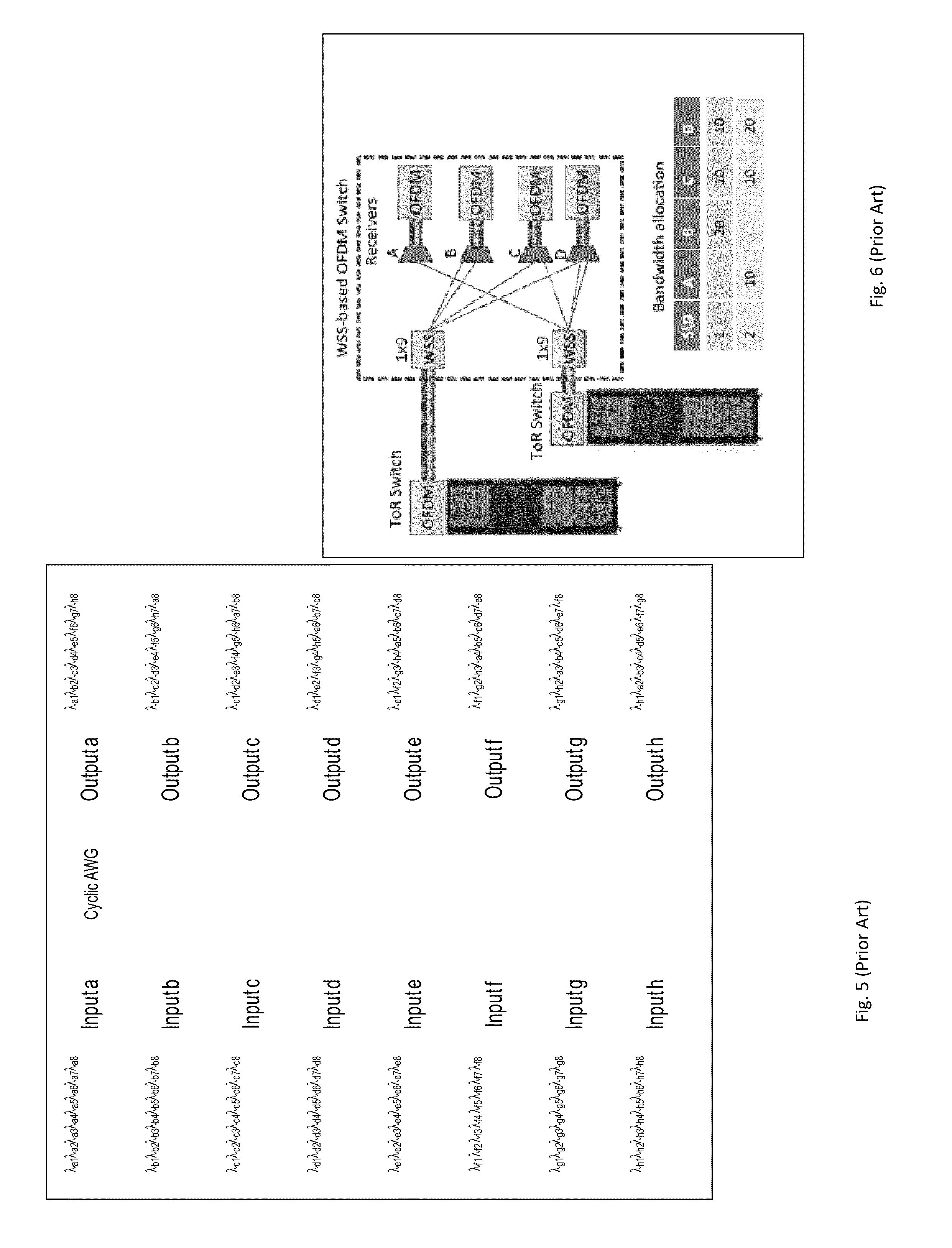MIMO-OFDM-Based Flexible Rate Intra-Data Center Network
- Summary
- Abstract
- Description
- Claims
- Application Information
AI Technical Summary
Benefits of technology
Problems solved by technology
Method used
Image
Examples
Embodiment Construction
[0040]The present invention uses a “CAWG+electrical OFDM+parallel signal detection” method to perform switching in the data center network. It has the benefit of optical layer switching (high bandwidth, low power consumption and heat dissipation). It combines the benefit of CAWG architecture, but not requiring TWC. By using electrical OFDM (instead of optical OFDM), the granularity for the bandwidth sharing is much finer. It also does not require WSS or optical core switch, and uses only a single receiver to receive multiple incoming signals (through the parallel signal detection technology), therefore reduces optical component cost, improves reliability, and allows fast switching / routing. It does not require electrical buffer.
[0041]Turning now to the block diagram of FIG. 1, showing aspects of load management and CO2 emission reduction for configuring second life battery energy storage
[0042]FIG. 7 shows the schematic of the proposed MIMO OFDM flexible rate intra-data center network...
PUM
 Login to View More
Login to View More Abstract
Description
Claims
Application Information
 Login to View More
Login to View More - R&D
- Intellectual Property
- Life Sciences
- Materials
- Tech Scout
- Unparalleled Data Quality
- Higher Quality Content
- 60% Fewer Hallucinations
Browse by: Latest US Patents, China's latest patents, Technical Efficacy Thesaurus, Application Domain, Technology Topic, Popular Technical Reports.
© 2025 PatSnap. All rights reserved.Legal|Privacy policy|Modern Slavery Act Transparency Statement|Sitemap|About US| Contact US: help@patsnap.com



